A leg press might seem like a piece of equipment that you only see at your local gym, but if you’re into strength training it can be a worthwhile investment for your own home gym as well.
Before you go ordering the first leg press you see on Amazon, let’s take a closer look at what you should be looking for in a press machine, and what you should avoid at all costs.
We’ll also take a close look at some of the many leg presses that are available on the market today and see what sets them apart from the pack and what makes them different than the machines that you might find at a gym.
Items to review:
What is A Leg Press?
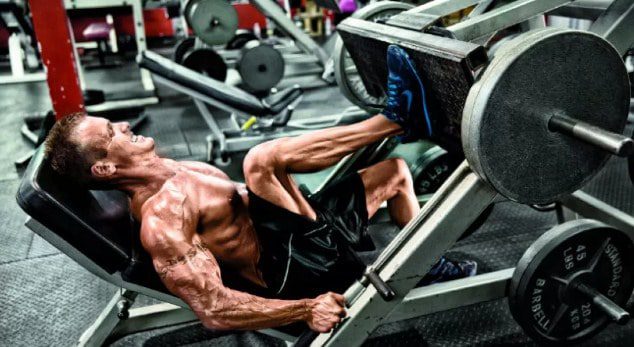
A leg press is a piece of equipment designed to help you strengthen and tone your legs, thighs, and glutes.
There are three different types of these presses commonly available – vertical, horizontal, and angled.
Vertical leg presses position you flat on your back with your legs directly beneath the weights. Once the weight lock is disengaged, you lower and raise the weights with the strength of your legs alone.
It also allows you to engage your abdominal muscles more frequently than an angled presses, and provides additional support for your back, making it ideal for anyone who is concerned about their spinal health while exercising.
Horizontal leg presses put you at a 90 degree angle horizontally – you’re basically sitting in a chair with your legs straight out in front of you.
This can be a good option but if you’re not using proper form, it can result in injuries.
Angled seat leg press puts you and the weights at a 45 degree downward angle, so you’re right in the middle between the horizontal and vertical presses.
These can also double as hack squat machines, which we’ll talk about more in a moment.
If you’re heading to your local gym, you’ll most often see horizontal and angled leg presses, though you may find the occasional vertical press at gyms designed for heavy weightlifting and bodybuilding.
Leg Press VS A Hack Squat Machine?

A leg press is designed specifically to allow you to use your legs and glutes to lift weights. They are a specialized piece of equipment that targets the muscles in your lower body.
A hack squat machine, on the other hand, can do both leg presses and angled squats, also known as hack squats.
You may find some leg press machines that can be converted for hack squats – the footplate will fold away and be replaced with shoulder pads so you can press the weight upward with your shoulders instead of with your legs.
Hack squats can allow you to lift more weight than traditional squats, and it keeps you in proper form so there is less chance of injury.
It doesn’t engage your core though, so make sure you don’t neglect those core exercises as part of your regular workout.
What are the Benefits of Training with a Leg Press Machine?
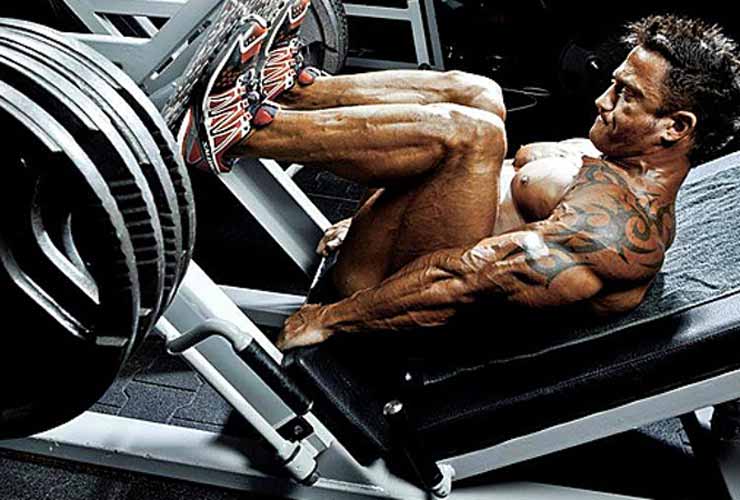
Training with a leg press has a host of benefits that you might not expect, including:
- Safety – You don’t need a spotter when you’re using a leg press and you can lift higher amounts of weight without worrying about balancing a bar. Most presses have weight locks that can be engaged to keep the weights in place between sets.
- Convenience – With your own leg press, you can easily work out in the comfort of your own home. No need for an expensive gym membership if you’ve got your own well stocked home gym.
- Targeted Exercise – Using a leg press allows you to target the muscles in your legs and hips, making it more effective than lower body exercises that only target one muscle.
- Improve your Vertical Jump – If you play any sports that require you to jump, a leg press should be part of your routine. The targeted exercise can help improve your vertical jump height.
- No Spinal Engagement – If you’re trying to increase lower body muscle mass, squats are usually a go-to exercise but these aren’t always an option if you have a back injury to worry about. Leg presses let you exercise and strengthen those muscles without putting additional strain on your back.
- No Core Engagement – You need strong core muscles to safely squat, especially once you start adding weight. If you need some time to work on your core, but still want to strengthen your legs, a leg press is your best option.
- Higher Weights – Since you don’t have to worry about keeping your back straight or your stance, you can easily lift more weights on the leg press than you would be able to doing weighted squats.
While it may seem like a one trick pony, because it only works the muscles in your lower body, a leg press can be a valuable addition to your home gym.
What Should I Look For in a Leg Press?
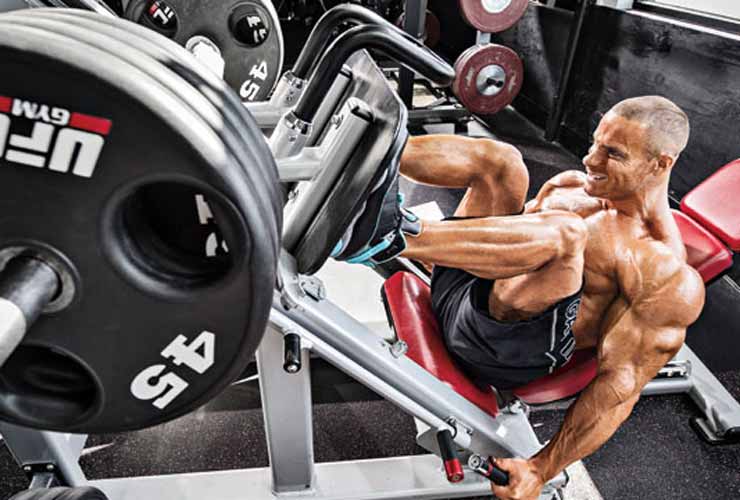
As with most things, especially an investment like a piece of gym equipment, it’s important to know what to look for before you start putting in those credit card numbers.
A few things you should look for before purchasing your first leg press include:
- Your Budget – A leg press is not an inexpensive piece of equipment, but it’s important to remember that you get what you pay for. Don’t break the bank, but don’t opt for the cheapest option either.
- The Machine’s Footprint – This is not a small piece of equipment, so make sure you have enough space for your leg press and any accessories that come with it. Check the specifications of the machine before you order it to ensure that there’s enough room in your home gym.
- Weight Being Lifted – How much weight are you lifting now? How much weight are you planning to lift in the future? Purchase a machine that has an upper weight limit lower than your maximum goal weight to ensure that it will serve you well, no matter how strong you get.
- Available Accessories – Does the press come with any accessories? Are they useful accessories for your workouts, or are you paying extra for bells and whistles that you’re never going to use?
- Features – What features does your new press have? Can be it converted to a hack-squat machine? If you need something other than just a leg-press, look into machines that offer extra features.
This is just a small sampling of the possible things you should be looking for in a leg press. The trick is to find something that works for your individual needs.
If you need special accommodations, a quick search can likely find you a machine that will work perfectly for you.
How Much Weight Can a Leg Press Hold?
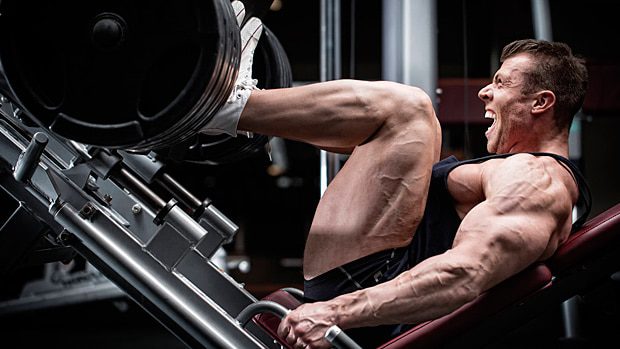
This is a loaded question – pun intended. When you’re searching for a leg press, the weight specification that you need to look for is the loaded weight – the maximum amount of weight that can be loaded safely onto the press.
It is important to note that the maximum weight limit will be less than the equipment’s failure rating, but you want to make sure that you don’t load more than the equipment’s maximum weight limit to ensure safe operation.
Let’s take a closer look at the weight limits on the three leg presses that we’ll be reviewing in a moment:
| Name | Weight Limit |
| Body Solid Leg Press/Hack Squat | 1,000 pounds |
| Powertec | 1,000 pounds |
| Powerline Vertical Leg Press | 400 pounds |
How Much Space Will I Need for my Leg Press?

The footprint of your leg press might not seem like an important thing to consider, but if you’re short on space, it can mean the difference between a functional piece of gym equipment, and a machine that you stub your toes into in the dark when you’re trying to get a glass of water.
Look for four measurements – length, width, depth, and height – to ensure that it will fit in your home gym. Let’s take a look at our three review targets.
| Name | Length | Width | Depth | Height |
| Body Solid Leg Press/Hack Squat | 83 Inches | 56 Inches | 34 Inches | 56 Inches |
| Powertec | 83.2 Inches | 56.8 Inches | 40.6 Inches | Unknown |
| Powerline Vertical Leg Press | 46 inches | 48 inches | 60 inches | Unknown |
The vertical leg press takes up much less floor space, but as the last table indicated, it also holds much less weight.
An angled leg press will take up a decent amount of floorspace, so keep that in mind before ordering.
How Much Does a Leg Press Cost?
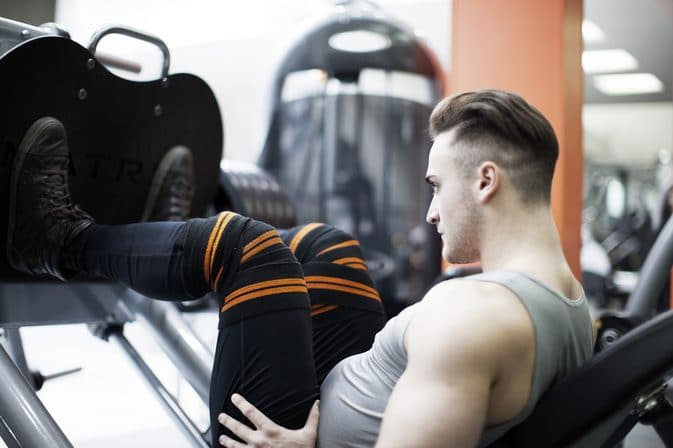
A good leg press is an investment that will serve you well for years to come. Unfortunately, it’s not a cheap investment.
The price of your new machine will vary depending on the capabilities of the press, the maximum weight, and accessories and features.
A fully featured leg press can cost up to $2,000, while a budget option can be obtained for less than $400.
The important thing to remember – while we’ve mentioned it before, it bears repeating – you get what you pay for.
Don’t expect to find a fully featured press for a bargain unless you’re buying used.
Used or secondhand equipment can be a great way to build your home gym without breaking the bank – but make sure you inspect the equipment before you purchase it to make sure it isn’t damaged or dangerous to use.
What Does it take to Assemble a Leg Press?
Unless you’re paying extra for expert assembly, a new leg press is going to arrive disassembled, in a variety of flat-pack boxes so it will be up to you to put it together.
The tools you need may come with the box, if it requires any speciality tools, but you may also need the basics: screwdriver, rubber mallet, box wrenches or a socket set.
The specific tools you need will be outlined in the assembly instructions.
Depending on the size of your leg press, you may need an extra set of hands to help you assemble it.
Some of the larger pieces can be awkward to try to position on your own, so bring a friend and make the work go faster.
It’s always more fun to have someone along for the ride, anyway.
Leg Press Reviews
And now for the part we’ve all been waiting for – the reviews!
We’ll take a look at some of the most popular leg presses on the market today to see if we can determine what makes these machines stand out in the crowd.
Body Solid Leg Press/Hack Squat

This angled leg press is a great option for beginners and experienced weightlifters alike. With a maximum weight limit of 1,000 pounds, it doesn’t matter how much you can lift – you’ll be all set.
The machine itself is equipped with a quad-track roller that helps the plate move smoothly regardless of the weight on it.
This particular leg press has an added bonus. By flipping the foot plate out of the way, this leg press converts into a hack-squat machine, allowing you to work on your leg muscles in two different ways.
It also has three lock-out heights, so it can be easily used by lifters of all heights – from under 5’ to over 6’! It’s a great option if you’ve got multiple users in your home, or if you’re purchasing this press for a commercial gym environment.
Instead of holding the weights above or to the side of the foot plate, this angled press has an undercarriage plate load system.
The 11 gauge steel frame will stand up to any punishment you can dish out.
With a comfortable seat, and well cushioned shoulder pads for the hack squat setting, this well built leg press will be comfortable and functional for years to come.
This isn’t the cheapest option out there, but for the life that you’ll get out of it, it’s definitely worth the investment.
Get The Body Solid Leg Press/Hack Squat on Amazon.com
Powertec

Another great option for those who want to add a leg press to their home gym, regardless of skill level, the Powertec angled leg press will fit well in nearly every situation.
This press also has a maximum weight limit of 1,000, so it will nearly fit into any workout routine.
Four horns mounted below the footplate track carry the weight, though they can be difficult to load at the higher settings if you’re using 45 pound plates.
While this particular lift can’t be used for hack squats, the comfortable seat and high weight capacity make up for the lack of additional accessories.
The footplate itself is fairly smooth out of the box which can make it slippery, but it’s something that can be easily fixed with some tread tape.
It holds 2″ Olympic plates, so you may need an adaptor if you have plates with a smaller mounting hole.
For a full angled leg press, this can be a great cost-effective option. The only complaint that we had was that the instructions were not user-friendly and were difficult to understand.
Other than that, this is a great leg press. If you’re handy, it should be a piece of cake it get it set up and ready to go. If not – ask for the help of a handy friend and you’ll be lifting weights in no time.
Powerline Vertical Leg Press
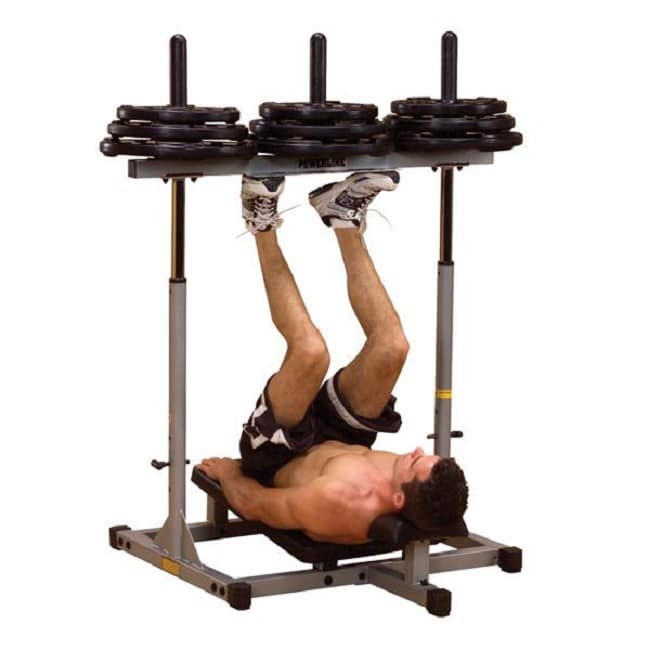
This is the only vertical leg press on our list, but it’s for a good reason. It may only hold 400 pounds, but you’re directly below the weights rather than on an angle so you don’t need as much weight to get the same results.
There are two locking pins directly next to the seat to keep the weights in place when you’re done lifting. You’ve got three locking heights as well, making it perfect for users of any height.
This is the only press on our list that uses 1 inch plates but you can easily purchase adapter sleeves that will make the three weight horns compatible with the larger 2 inch Olympic plates.
For comfort, it’s got an extra thick back pad, and a contoured head and neck cushion to keep your back and neck in the correct position during your workout.
This is probably the best press if you don’t have a ton of extra space, as it has a very small footprint, and if you don’t have a lot of money to spend on gym equipment.
This particular model is very affordable so if you want to add to your home gym without emptying your bank account, this is the press for you. You also don’t need a ton of extra weights for this one so you save space there too!
Get Powerline Vertical Leg Press on Amazon.com
Wrapping It Up
A leg press may be one of the most versatile pieces of equipment in your home gym when it comes to lower body exercise.
Any of the three options we listed will make a great addition to your home gym, though the vertical press might be a better option if you don’t have a lot of extra space.
When it comes down to it though, you get what you pay for and that goes double for gym equipment.
If you take the time to invest in a good leg press, it will serve you well for years to come. A machine like this is worth the investment.
